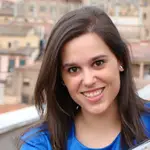2.House work: Masters and Maids

Thomas Kennington’s famous painting, “A Pinch of Poverty,” captures the distress of the poor in Victorian England. Source: Foundling Museum foundlingmuseum.org.uk
The Master and Servant Act of 1823 criminalized any employee who breached a contract. Indeed, an indentured servant who attempted to cut his or her ties with a master and seek work elsewhere could be considered a “criminal,” while their often-abusive masters remained shrouded in legal protection. This act — meant to discourage workers from organizing and demanding better treatment — effectively forced employees to stay loyal to their masters irrespective of what they did, out of fear of prison.
And this fear was real: In a single year, decades after the law was passed, over 10,000 servants were tried for violating this law. None of their masters faced prosecution.
Wrote lawyer Ernest Jones at the time, “[I]n one year alone, 1864, the last return given, under the Master and Servants Act, 10,246 working men were imprisoned at the suit of their masters — not one master at the suit of the men!”





